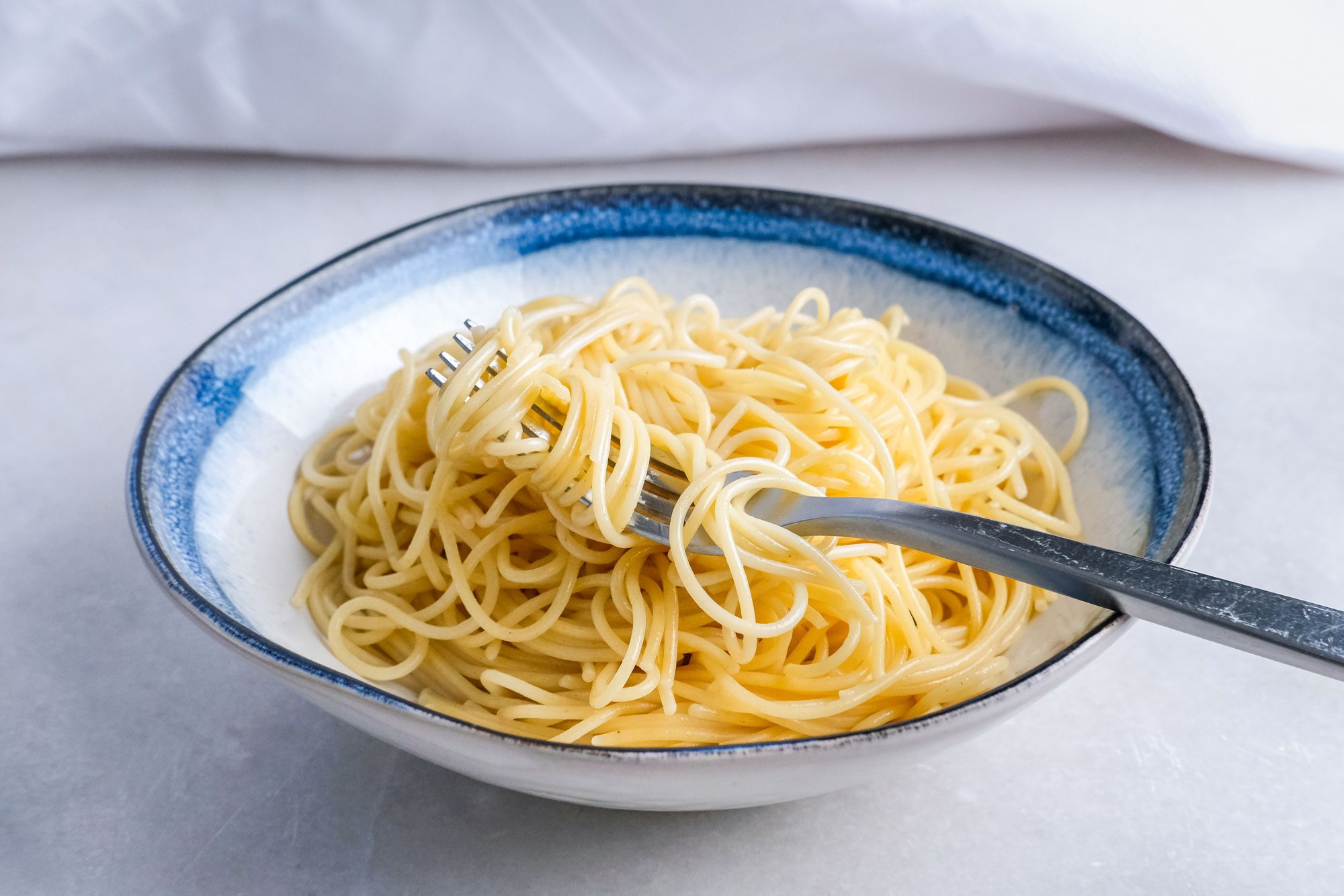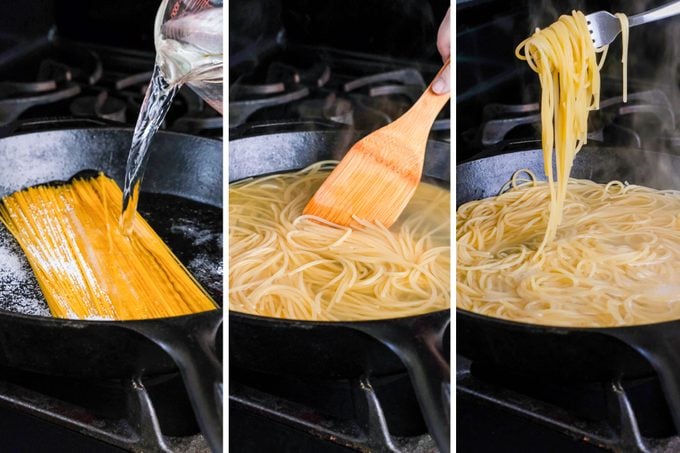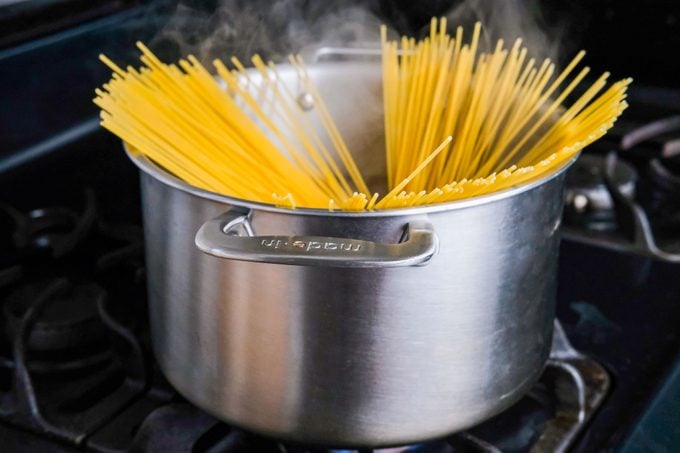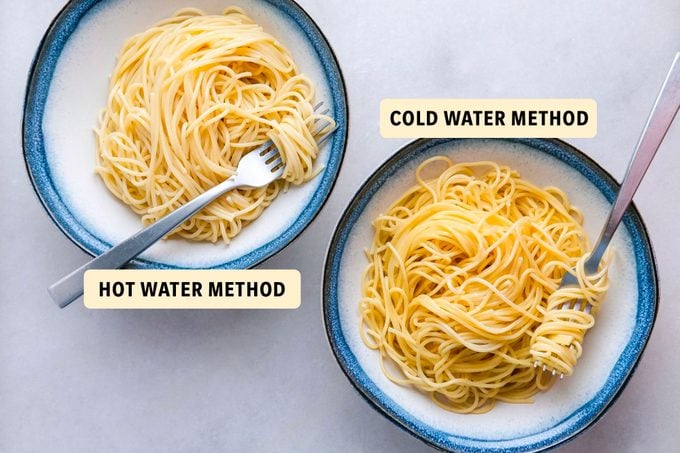Does the cold-water pasta hack really save water and time? We tested the theory to find out.

I Tested the Cold-Water Pasta Hack—Here’s What I Found Out

I hate cooking pasta. Don’t get me wrong; I love eating pasta. But waiting for water to boil, then cooking the pasta and hoping that you get that perfect al dente consistency? I have yet to master the art of perfectly cooking pasta.
Thankfully the internet is full of nifty hacks, and of course there’s a hack for cooking pasta: the cold-water pasta method.
What makes this particular hack so special? Experts (like Alton Brown) claim that using the cold-water pasta hack will cut the cooking time in half, as well as reduce the amount of water you use. Think about it. How many times have you filled up your pot more than halfway with water, only to drain most of it later? Does pasta really need that much water to cook?
According to the cold-water pasta hack, the answer is no. I had to test the method myself.
What is the cold-water pasta method?

This method has you start your pasta in cold water and then cook it to perfection.
Using guidelines from America’s Test Kitchen for the cold-water pasta hack, here’s how I tested this method:
- Add 8 to 16 ounces of pasta to a 12-inch skillet, along with 1-1/2 teaspoons of salt and 1 quart of cold water.
- Turn the burner to medium-high heat and wait for the water to start steaming; this should take about two to three minutes. Stir the pasta occasionally as the water temperature continues to rise, coming to a boil.
- Cook the pasta to your desired doneness, continuing to stir occasionally. The entire process should take 13 to 15 minutes.
The process seemed too good to be true. Fifteen minutes is all you need, and you’ll have perfectly cooked pasta? I was skeptical, so I decided to give it a try.
Does the cold-water pasta hack work?

The short answer: yes.
The long answer: I decided to try the cold-water pasta hack side-by-side with the typical method of boiling pasta in a pot to see if the claims to save time and water were valid.
The cold-water pasta hack cut the cooking time nearly in half. Boiling water in a pot not only used double the amount of water, but it took 22 minutes from start to finish. While I do think the timing will depend on the pasta shapes you’re cooking, it only took 13 minutes for 8 ounces of spaghetti to reach a perfect al dente texture.
I also found that the texture of the pasta was more satisfactory when compared to the pasta made using the usual boiling water method. When I boil water before adding the pasta, it’s harder to gauge when the pasta is done. You have to keep testing it to make sure it’s at the right consistency, and I never seem to get it right. Yet for the cold-water method, I found that when the water was significantly reduced at around 12 minutes, the pasta looked almost ready to drain. I gave it a quick taste test, and it was perfect.
The concentrated salt-to-water ratio gave this pasta even more taste compared to the usual boiling water method. Yes, you should always season your pasta water with salt; it helps give your pasta taste. With the specific measurements this hack calls for, I found the taste of the cold-water pasta was superior to the boiled-water pasta.

In conclusion, I’m a convert. Unless the recipe I’m cooking calls for a significant amount of pasta water (it helps with thickening sauces), I will absolutely be using the cold-water pasta hack moving forward. No more tragic pasta mistakes!
The cold-water hack saves water and time, and the pasta is cooked to perfection. Now it’s time to decide which of your favorite pasta recipes you’ll try it with first.


















